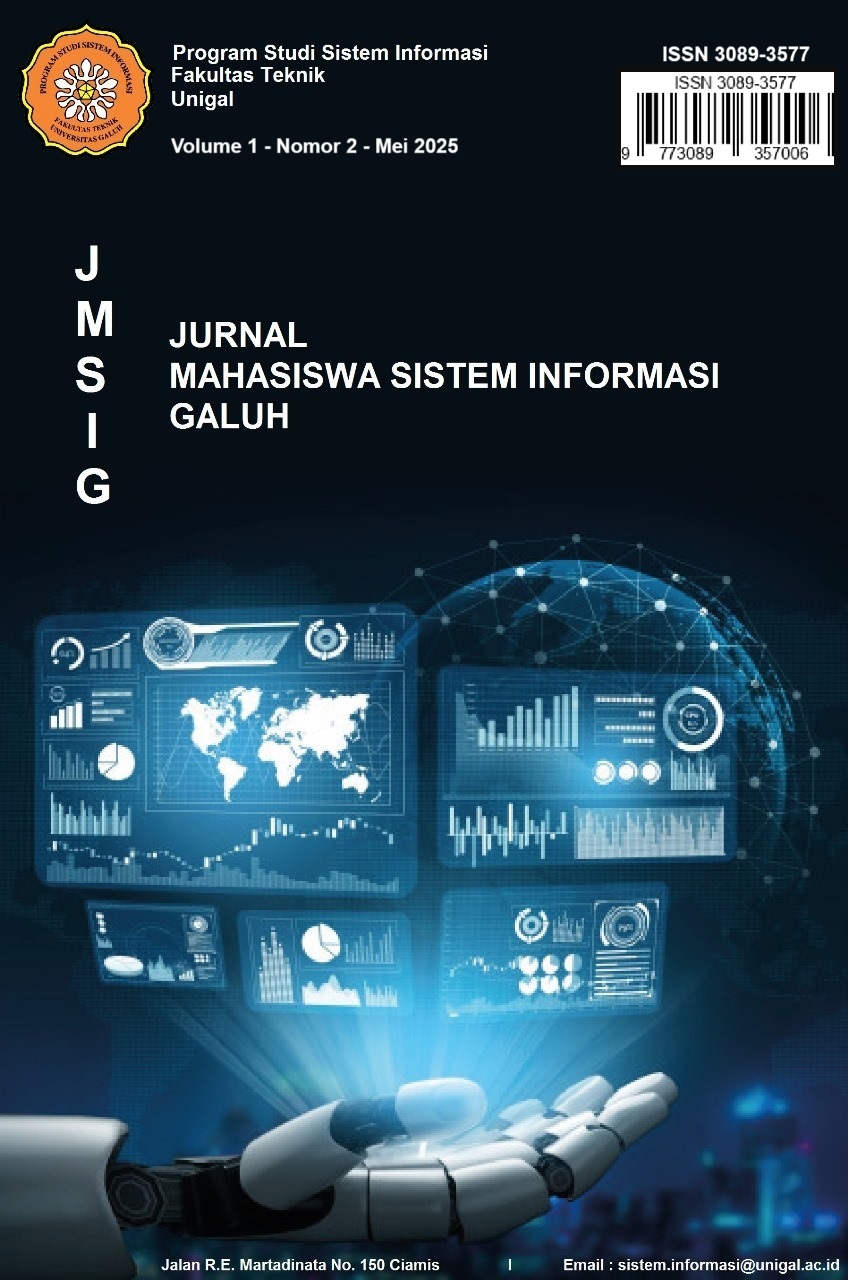PERENCANAAN ARSITEKTUR SISTEM INFORMASI DENGAN MENGGUNAKAN METODE ENTERPRISE ARCHITECTURE PLANNING (EAP) PADA UD. AMANJAYA 03 DAYEUHLUHUR
DOI:
https://doi.org/10.25157/jmsig.v1i2.4145Keywords:
EAP (Enterprise Architecture planning), Information System, BlueprintAbstract
Seeing the increase in demand from the general public for the use or processing of wood, UD. Amanjaya 03 exists as a timber company engaged in the trading business. UD. Amanjaya focuses on selling raw goods, namely selling wood in the form of logs and logs and only carrying out the process of buying and selling wood, cutting and marketing. However, employee payroll and attendance processes still use manual processes. It is hoped that this research can become evaluation material for entrepreneurs in carrying out their business activities. On this basis, the researcher proposed the research title, "Information System Architecture Planning Using the EAP Method at UD. Amanjaya 03 Dayeuhluhur”. The methodology used in this research is Enterprise Architecture Planning (EAP). a) Layer 1 – Initialization of planning This stage explains how to start the EAP, including the methodology used, who should be involved, and what equipment to use. This will result in a better work plan. b) Layer 2 – Overview of the current state of the enterprise. This stage explains how to collect basic information and knowledge about the business to run the business, as well as identifying current application systems and technology platforms. c) Layer 3 – Review of future enterprise plans. At this stage, 3 things will be done, namely: 1) Data architecture, namely defining the type of data needed for business needs. 2) Application architecture, which defines the type of application needed to manage data and support business functions. 3) Technology architecture, which defines the technology platform needed for applications that manage data and support business functions. For implementation, an implementation schedule is made based on the sequence of application implementation that has been created and a blueprint recommendation is included. There must be a strong commitment from management in developing the system and all users involved must work according to the SOP. If there are changes to business processes, they must have permission from management.











